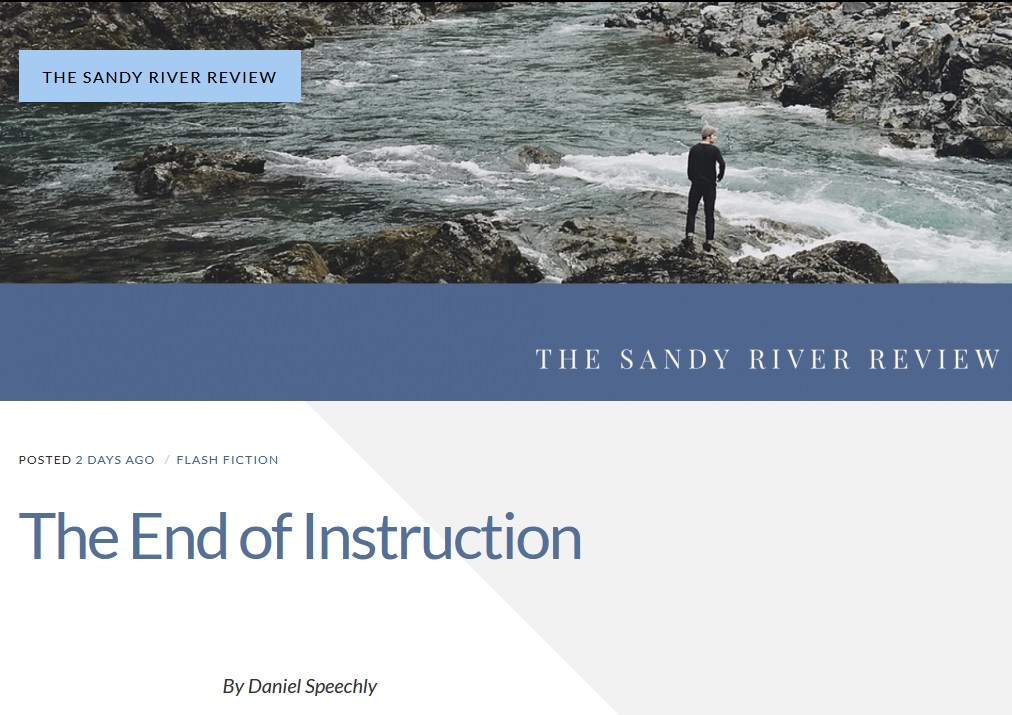The End of Instruction
April 2, 2025
I am pleased to announce publication of my flash fiction story, “The End of Instruction,” in The River Online. I would like to thank the editors for recognizing my writing and finding a place for it in their journal.
This is my sixth publication since July 2023. I’ve published four nonfiction essays and two flash fiction stories. At my current rate I’ve published two essays or stories per year, and as it’s only April and I’ve already published twice in 2025, I expect to publish at least one more piece before the end of this year, giving me more momentum to publish at an even quicker pace moving forward.
What I don’t always share in these blog posts about my recent successes, however, is the process of publication and how rife with failure it can be. Therefore, I thought it might be useful to reflect on this topic now. As you may know, publication is one of the most frustrating parts of writing. This frustration has nothing to do with the editors themselves. We all know that they work tirelessly to publish good writing. Said frustration is simply a feeling born from the loss of control that occurs when handing over one’s writing to another and receiving what feels like the potential for an endless wave of rejections.
Rejection is, unfortunately, part of writing. Leading up to the publication of “The End of Instruction,” the story had been rejected by nine journals over the course of 5 months. However, among those nine rejections, two were overwhelmingly positive. This was the first time I had received positive feedback from a rejected story. In other words, it was the first time I received praise in the process of accumulating failure. It was a nice surprise, like being told and believing the phrase, “it’s not you, it’s me,” during an amicable breakup. It’s the type of phrase that one can take at face value only after acquiring a bit of maturity.
As an example of such an amicable break up, let’s take the way Shenandoah Literary handed me my rejection. The editors at this journal responded to my story by writing, “We appreciated the chance to consider your work and found much to admire in this story, but ultimately, we are passing on the opportunity to publish it.” Although Shenandoah’s rejection was a form letter, i.e., not personalized, it was a positive rejection nonetheless. Flash Fiction Magazine provided an even more positive but also more personal praise in their rejection. One reader from Flash Fiction Magazine wrote in response to my story, “My son is a teacher; this hits eerily close to home as to what’s going on in the US. Thanks for writing a piece that gives us pause and makes us think,” while another reader wrote, “The theme of your story is poignant, given the state of affairs today” and a third reader stated, “Your writing was engaging and contained many great lines.” Receiving such positive praise embedded in each rejection acted as a nice bit of encouragement to keep trying. These positive rejections softened the blow and made the process of continuing to submit “The End of Instruction” a bit easier.

